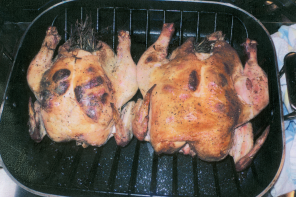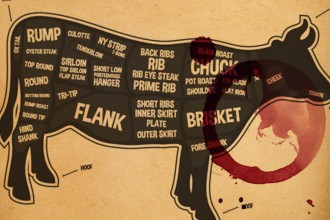If anyone’s ever told you there’s no way to become a wine expert in a week, they’re lying. Kind of. Familiarizing yourself with the noble grapes won’t net you a sommelier certificate, but knowing the major varietals can give you a taste of (almost) the entire wine spectrum.
What makes a grape noble?
Good question (and, no, it doesn’t have to do with noble rot). Technically, the term refers to international, recognizable varieties that reliably produce high-quality wine, are widely planted in major regions, and are the backbone of the industry. These are grapes that are known for expressing the terroir of wherever they’re grown – i.e., a Chardonnay from Chablis will evoke lemon and apple while one from South Australia will be tinged with mango.
After that, things get a bit murky, with some experts claiming only six make the list, while others argue seven or even 18 earn the distinction. The controversy is primarily due to what constitutes “international and recognizable.” This often translates to what grapes are most popular universally. Those who fall on the more conservative side of the vino spectrum also believe that grapes such as Tempranillo, which don’t fare well outside of their traditional growing region, should be excluded.
But the times they are a changing as plantings diversify wine production increases, hybrids are born, and drinkers branch out. Don’t see your favorite red or white grape below? As history has shown, this list is mutable and there are plenty of leaders in the wine world who don’t shy from change. However, if these lists seem like they’re missing some favorites, you’re not wrong: dessert wine, rosé, and sparkling wine are all exempt.
The Originals
For traditionalists, you’re looking at Merlot, Cabernet, Pinot Noir, Sauvignon Blanc, Chardonnay, and Riesling. For the slightly edgier traditionalists, add in Syrah. It’s no coincidence that all but one of those originated in France centuries before, and Riesling, despite its German beginnings, encountered success in the Alsace region.
This is partly thanks to a great marketing campaign enacted unwittingly by King Louis XIV: the monarch developed such a reputation for extravagance and luxury that the rest of the world started to crave all things French, including the wine. It’s also partly just due to French and wine having a history — they’d spend centuries perfecting their craft, priming it for global domination. The vines started to wind their way far outside of France, making them ubiquitous, well-known, and beloved. They were labeled cépage noble, or, roughly, noble grapes.
Now, different varieties have taken root and are starting to establish themselves as prominent, though some still don’t recognize them as noble. But why limit yourself to just seven grapes when there’s so much more wine to discover (and drink)?
The Newbies
On the red end of the spectrum, from lightest to darkest, Grenache, Sangiovese, Nebbiolo, Tempranillo, and Malbec are welcome additions. Incorporating grapes from Spain and Italy, the updated range encompasses light, fruity wines with smooth tannins to heavier tannins and bolder, richer flavors.
From lightest to richest, the new whites include Chenin Blanc, Moscato, Gewurztraminer, Sémillon, and Viognier. Chenin Blanc introduces zesty, floral notes, German Gewurztraminer brings in honey and ginger, and with Sémillon comes dry, medium-bodied wines fragrant with citrus.
Tasting these grapes will broaden your wine knowledge and expose you to a more nuanced understanding of leading red and white varietals. While this is only a peek into the dizzyingly vast world of wine, it provides a fairly comprehensive introduction to different notes, tannins, and color, and your own preferences.
Grab a glass and forego the textbook: this is the kind of education everyone can get behind.










You guys forgot Aglianico, Tempranillo, and a whole slough of Spanish and Portuguese varieties that without a doubt make some of the most wonderful wines in the world!
Besides Aglianico, I’d forgotten to mention the many other ancient wine grape varieties: Sagrantino, Pie di Rosso, Selice Salentino, Code di Volpe, Gagliopo, Primativo di Manduria, Nerello Moscalese. Falanghina, Greco di Tufo, Moscato di Siracusa etc. The list is virtually endless but thanks to Michelle Mestrobardino, a literal viticultural archaeologist, many of these ancient grape varieties that almost had become extinct have been resurrected and can give us a taste of what ancient Roman wine might have been like.